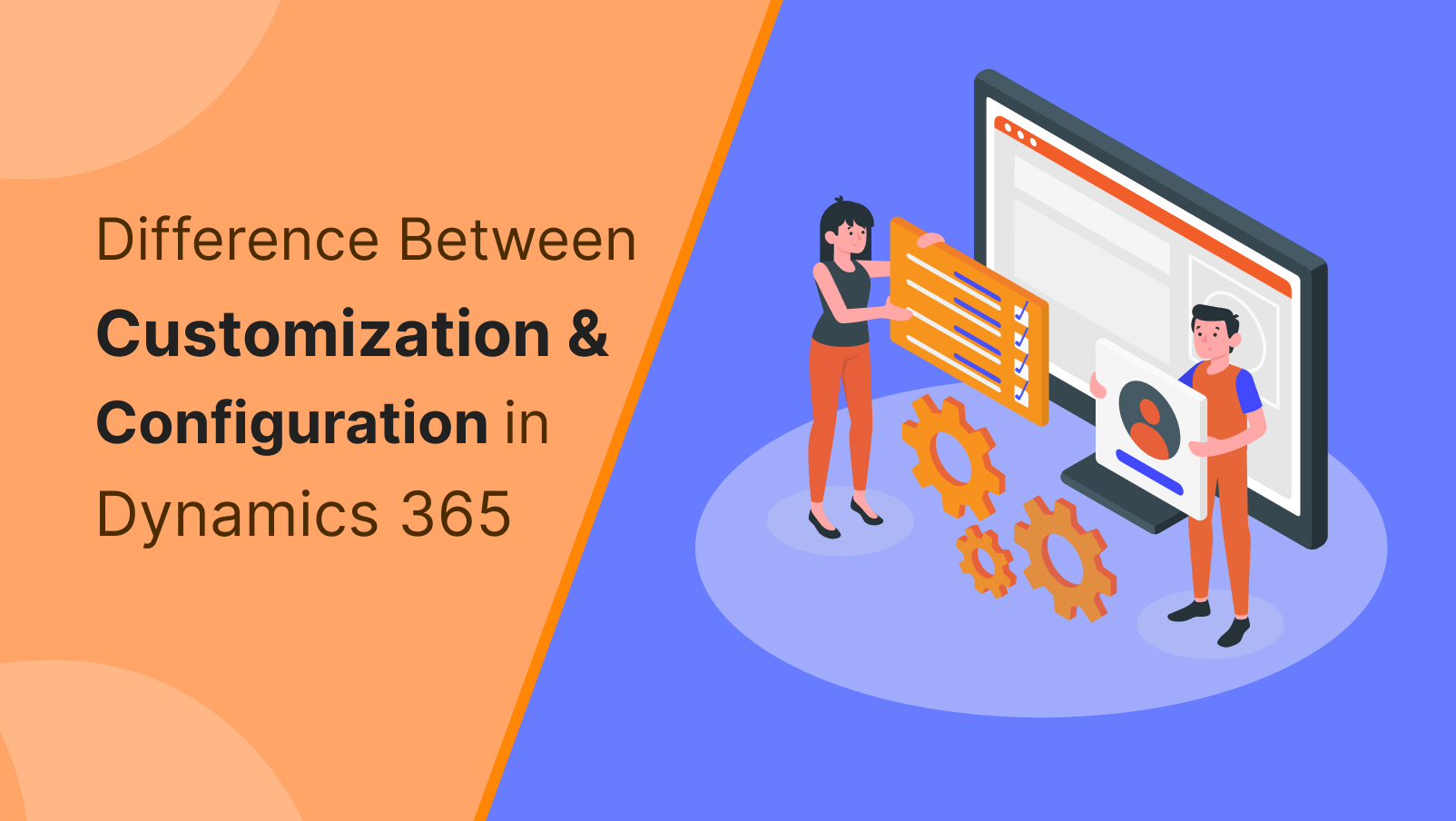
Difference Between Customization and Configuration in Dynamics 365
March 06, 2025
Microsoft Dynamics 365 is a powerful enterprise resource planning (ERP) and customer relationship management (CRM) solution. Businesses across industries leverage it to streamline operations, improve customer engagement, and enhance decision-making. However, implementing Microsoft Dynamic ERP solutions requires tailoring them to an organization's specific needs. This is where customization and configuration come into play. While these terms are often used interchangeably, they have distinct meanings and implications for system implementation, scalability, and maintenance.
This article explores the key differences between customization and configuration in Dynamics 365, their advantages, and when to choose one over the other.
What is Configuration in Dynamics 365?
Configuration in Microsoft Dynamic ERP solutions refers to making adjustments within the system using built-in tools and settings without altering the underlying code. Configuration enables organizations to modify functionalities to fit their needs without requiring extensive technical expertise or developer involvement.
Key Aspects of Configuration:
User Interface (UI) Adjustments - Changing layouts, adding or removing fields, and modifying views.
Business Rules and Workflows - Defining rules that automate standard business processes without custom coding.
Security and Permissions - Setting up user roles, access controls, and data visibility.
Entity and Field Customization - Creating custom fields, entities, and relationships within Dynamics 365.
Dashboards and Reports - Designing custom dashboards and reports using built-in tools.
Data Management - Defining data import/export processes and validation rules.
What is Customization in Dynamics 365?
Customization goes beyond standard configurations and involves modifying the system’s code or extending its capabilities with custom-developed functionalities. Customization is necessary when Microsoft Dynamic ERP solutions do not provide built-in features that meet specific business requirements.
Key Aspects of Customization:
Custom Code Development - Writing JavaScript, .NET plugins, or API integrations to add new capabilities.
Custom Workflows and Automation - Developing complex business processes that require advanced logic beyond standard configurations.
Custom UI and Extensions - Building new user interfaces, forms, or custom apps that integrate with Dynamics 365.
Integration with Third-Party Systems - Connecting Dynamics 365 with external applications, such as payment gateways or legacy systems.
Custom Entities and Attributes - Creating new entities and relationships beyond what is available in standard configurations.
Modifying System Behavior - Adjusting core functionalities by overriding existing features.
Key Differences Between Configuration and Customization
| Aspect | Configuration | Customization |
|---|---|---|
| Definition | Adjustments using built-in settings without coding | Modifications requiring coding and development |
| Complexity | Low to moderate | High |
| Cost | Lower cost, as it relies on built-in features | Higher cost due to development efforts |
| Time to Implement | Faster implementation | Longer due to coding and testing |
| Scalability | Easier to scale and maintain | Can be complex and require ongoing support |
| Security Risks | Minimal, as it follows Microsoft’s framework | Potential risks if not coded properly |
| Future Upgrades | Compatible with new updates | May require redevelopment after upgrades |
When to Use Configuration in Dynamics 365
When your business needs can be met with standard functionalities.
When you require quick implementation with minimal technical involvement.
When maintaining system compatibility with Microsoft updates is a priority.
When you need cost-effective and scalable modifications.
When setting up basic security roles, permissions, and dashboards.
When to Use Customization in Dynamics 365
When business processes require advanced automation beyond built-in workflows.
When integrating Dynamics 365 with third-party applications.
When creating industry-specific functionalities that are not available in standard features.
When optimizing performance with tailored UI elements and workflows.
When implementing advanced reporting and analytics solutions.
Balancing Configuration and Customization
In many cases, organizations may need a combination of configuration and customization to fully optimize their Microsoft Dynamic ERP solution. A strategic approach ensures that businesses leverage out-of-the-box features as much as possible while using customization only when necessary.
Best Practices for Implementing Configuration and Customization
Assess Business Needs - Clearly define requirements to determine if configuration alone is sufficient.
Minimize Customization - Use standard configurations whenever possible to reduce maintenance and upgrade risks.
Follow Microsoft’s Guidelines - Ensure that all configurations and customizations align with Microsoft best practices.
Test Thoroughly - Validate configurations and customizations in a test environment before deployment.
Monitor Performance - Regularly evaluate system performance to optimize configurations and custom code.
Plan for Future Upgrades - Keep customization modular and well-documented to facilitate seamless future updates.
Conclusion
Understanding the difference between customization and configuration in Dynamics 365 is crucial for organizations looking to optimize their Microsoft Dynamic ERP solution. Configuration allows businesses to modify functionalities using built-in tools, ensuring quick and cost-effective changes. On the other hand, customization extends system capabilities through coding, offering tailored solutions for complex business needs.
By carefully evaluating business requirements and following best practices, organizations can achieve a balance between configuration and customization, ensuring a scalable, maintainable, and efficient Dynamics 365 implementation.











